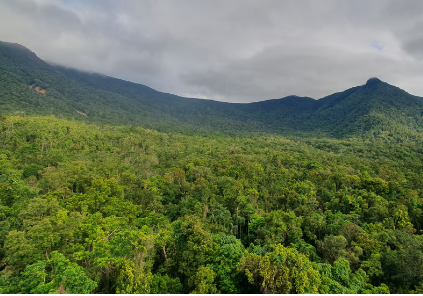Ozone Pollution Hurts Tropical Forest Growth, Study Finds
A recent study published in Nature Geoscience has revealed that ozone pollution is harming the growth of tropical forests, causing them to lose nearly 300 million tonnes of carbon every year. This is a big concern because tropical forests play a key role in fighting climate change by absorbing carbon dioxide from the air. The study highlights the urgent need to tackle air pollution to protect these important ecosystems.
Tropical Forests and Climate Change
Tropical forests are essential in the fight against climate change because they act like a giant sponge, absorbing carbon dioxide (a major greenhouse gas) from the atmosphere. When tropical forests are healthy, they help reduce the amount of carbon in the air, which is good for the planet. But when their growth is affected, it reduces their ability to absorb carbon, making it harder to fight climate change.
Impact of Ground-Level Ozone
Ground-level ozone is a harmful pollutant created when gases from human activities like driving cars and running factories mix with sunlight. Unlike the ozone layer in the sky that protects us from the sun’s harmful rays, ground-level ozone is bad for plants and people. In this case, it prevents plants, including tropical trees, from absorbing carbon dioxide properly. According to the study, this pollution has reduced the yearly growth of tropical forests by 5.1%.
Research Findings
Scientists looked at different types of tropical trees to see how sensitive they were to ozone pollution. They used a computer model to predict how plants would respond to rising ozone levels. The study found that ozone pollution is getting worse due to urbanisation, industrialisation, and the use of fossil fuels (like coal, oil, and gas). This increase in ozone levels is bad news for tropical forests.
Worsening Conditions
If ozone pollution continues to rise, the damage to tropical forests will get worse. This is especially concerning for areas where people are working to restore forests to help fight climate change. High ozone levels in these areas could make it harder for these restoration efforts to succeed.
The study calls for stronger measures to reduce ground-level ozone. Improving air quality will not only help tropical forests grow better but also increase the amount of carbon these forests can absorb. This, in turn, will help in the global effort to combat climate change.
What is Ozone Pollution?
Ozone pollution mainly comes from vehicle emissions and industrial activities. It forms close to the ground, where it can harm both plants and people. Unlike the ozone layer high up in the atmosphere, which protects us from the sun, ground-level ozone can cause breathing problems, especially in vulnerable people like children and the elderly. Ozone levels are highest in summer when there is more sunlight to trigger its formation. Cities tend to have higher ozone levels than rural areas. Ozone pollution also affects crop yields, reducing food production. Efforts like the Clean Air Act in the U.S. aim to control ozone levels, and there are ongoing global efforts to reduce its harmful effects.
Month: Current Affairs - September, 2024
Category: Environment Current Affairs







